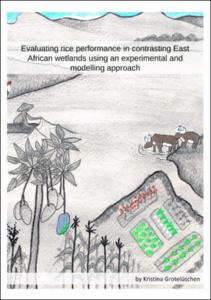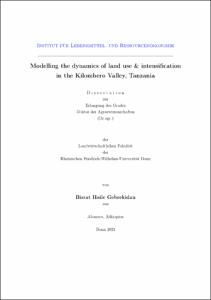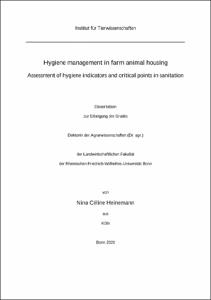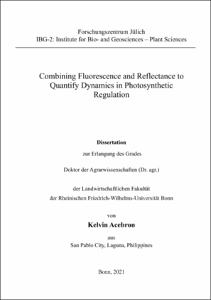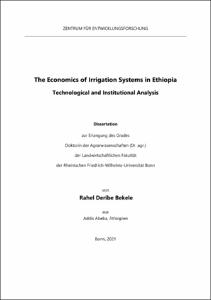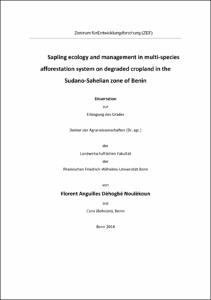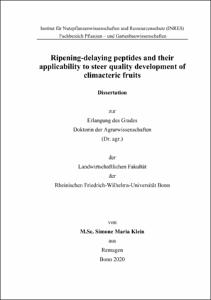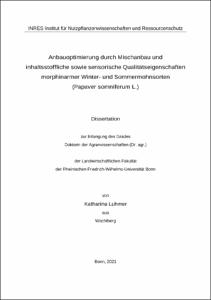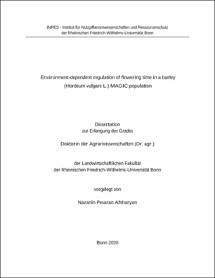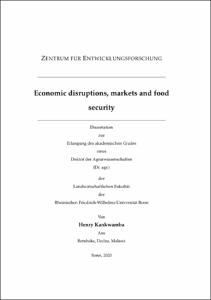E-Dissertationen: Search
Now showing items 11-20 of 87
Evaluating rice performance in contrasting East African wetlands using an experimental and modelling approach
(2021-10-07)
Rice (Oryza spp.) has become an important staple food and cash crop across East Africa, and is now playing a pivotal role in regional food security and national economies. Since regional rice yields remain low, intensification ......
Reis (Oryza spp.) hat sich in ganz Ostafrika zu einem wichtigen Grundnahrungsmittel und Cash-Crop entwickelt und spielt heute eine zentrale Rolle für die regionale Ernährungssicherheit und Volkswirtschaften. Da ......
Reis (Oryza spp.) hat sich in ganz Ostafrika zu einem wichtigen Grundnahrungsmittel und Cash-Crop entwickelt und spielt heute eine zentrale Rolle für die regionale Ernährungssicherheit und Volkswirtschaften. Da ......
Modelling the dynamics of land use & intensification in the Kilombero Valley, Tanzania
(2021-06-17)
This thesis intends to examine the determinants and results of farmer’s decisions to uptake different paths of intensification, land use, and its dynamics over time by building a spatially and temporally explicit agent-based ...
Hygiene management in farm animal housing: Assessment of hygiene indicators and critical points in sanitation
(2020-09-04)
Cleaning and disinfection together form an important aspect of hygiene management in livestock farming. The professional implementation of these hygiene measures can help to interrupt infection chains, prevent the spread ......
Hygienemanagement in der Nutztierhaltung : Bewertung von Hygieneindikatoren und kritischen Punkten
Reinigung und Desinfektion bilden zusammen eine wichtige Säule des Hygienemanagements in der ......
Hygienemanagement in der Nutztierhaltung : Bewertung von Hygieneindikatoren und kritischen Punkten
Reinigung und Desinfektion bilden zusammen eine wichtige Säule des Hygienemanagements in der ......
Combining Fluorescence and Reflectance to Quantify Dynamics in Photosynthetic Regulation
(2021-12-14)
Photosynthesis in the field is anything but steady-state. Because environment is changing, understanding plant’s photosynthetic activity in situ is challenging. Measurement of solar-induced fluorescence (SIF), along with ......
The Economics of Irrigation Systems in Ethiopia: Technological and Institutional Analysis
(2021-12-14)
The Government of Ethiopia has made a strong commitment to developing and expanding various types of irrigation systems, technologies, and institutions among smallholder farmers. As a result, the irrigated area in the ...
Sapling ecology and management in multi-species afforestation system on degraded cropland in the Sudano-Sahelian zone of Benin
(2020-12-01)
Sub-Saharan Africa faces the multiple challenges of improving food security of the rapidly growing human population while halting the severe land degradation and coping with climate change impacts. Re- and afforestation ...
Ripening-delaying peptides and their applicability to steer quality development of climacteric fruits
(2020-06-24)
Processes extending the shelf-life of climacteric fruits play an important role in increasing sustainability of global food supply. As consequence of uncontrolled ripening process, significant losses in quantity and quality ...
Anbauoptimierung durch Mischanbau und inhaltsstoffliche sowie sensorische Qualitätseigenschaften morphinarmer Winter- und Sommermohnsorten (Papaver somniferum L.)
(2021-05-04)
Der Anbau und die Vermarktung von Mohnsamen aus regionalem Anbau bieten Chancen, eine alte Kulturpflanze in moderne Agrarökosysteme und Betriebskonzepte zu integrieren und diese ökologisch wie ökonomisch aufzuwerten. ...
Environment-dependent regulation of flowering time in a barley (Hordeum vulgare L.) MAGIC population
(2020-10-21)
Barley (Hordeum vulgare L.) is used as a source for food and feed and is the fourth widely cultivated cereal world-wide. Flowering time is a complex trait controlled by endogenous and environmental factors that marks ...
Economic disruptions, markets and food security
(2020-12-30)
Idiosyncratic and covariate shocks have considerable impacts on household food security and welfare. While impacts of covariate and idiosyncratic shocks have been widely documented, the mitigating role of infrastructure ...


